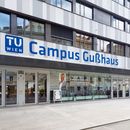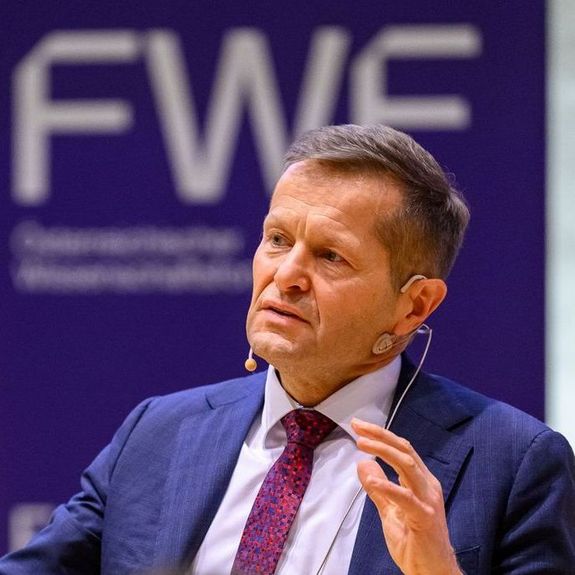Interview with nanobiotechnologist Sonia Prado-López
Sonia Prado-López is an assistant professor at the Institute of Solid State Electronics at Technische Universität Wien. She conducts basic research on the development, spread and control of cancer, the disease that is the second leading cause of death in Europe. In this interview, the scientist talks about the repercussions her research will have on society or about what her early interest and love of nature and her parents' devotion have to do with her path.
What are you currently dealing with in your work?
Sonia Prado-López (SPL): In brief, my scientific interest is in biomedical electronics research with special emphasis on addressing fundamental scientific questions of the origin, spread and control of cancer. But also, to develop and apply micro-electronic and nano-electronic innovative solutions for early cancer diagnosis and treatment development. I focus on ColorectalCancer (CRC) and Metastatic Melanoma (MM). Colorectal Cancer is the second most common cause of death from cancer in Europe. It causes more than 250.000 deaths per year and the five-year relative survival rate is 64.4%. Moreover, Austria presents a higher incidence rate of the disease within Europe. On the other hand, MM is the most aggressive skin cancer. More than 100.000 new cases are diagnosed each year in Europe, and the incidence of melanoma is increasing at a rate of 3-7% in many European countries. It is the third most common cancer among women aged 20-39 and the second most common cancer in men aged 20-39, causing more than 22.000 deaths per year only in Europe.
In this context, I am one of the principal investigators of the recently granted IraSME FFG project ELEVATE: Bioelectronic platform for personalized cancer therapy based on 3D printed spheroids and patient-derived microtumours https://www.tuwien.at/en/etit/bme/projects/elevate.
Besides, important pillars of my activities at TU Wien are also teaching and mentoring of young researchers. I found great joy in contributing to the education of future generations of professionals and scientist. Also, I actively do networking and share my research results with the scientific community and the society by writing papers. Furthermore, a very important activity in my daily work is grant-writing to fund my research.
What do you think the results of your work will be – which impact might it have?
SPL: I think that my research will impact society by opening new ways for the study of cancer, more effective pharmacological approaches, increase patient life expectancy and cost reduction in cancer treatment. Moreover, it will result in innovative technological products for the diagnosis of cancer and drug development. What motivates me is to converge the actual knowledge in tumoral biology, tissue engineering, microfluidics and electronics to create “ex vivo” tumoral models, first of a kind. The idea is to overcome the simplicity and inadequacy of the actual tissue culture and animal models employed in the study of cancer. Proof of that is that more than 90% of early clinical trials after successful preclinical assays in mice fail in humans. Additionally, other important benefits of my work will be to reduce the use of animal models in research. The extended use of the in vivo models implies animal suffering but also a big significant economic burden for the research institutions. This is aligned with the EU legislation, Regulation EU 2019/1010, which encourage to replace, reduce and refine the use of animals for experimentation.
Thinking back, what was important to your career? Did you know what you wanted to be when you were a child and was there any imprinting and encouragement from your family?
SPL: As a child, I do not remember thinking “I am going to be a scientist”. What I do remember is having plenty of curiosity about nature. My entire childhood was about observing nature drawing animals and plants. I loved visiting my grandmother at the weekends and be outside observing the environment all the time. Once, I ran away without saying anything to my grandmother to spend the day at the creek drawing and catching frogs. I was 7 years old, and I was missing for several hours. They finally found me 4 hours later. My scientific explanations were of no use, my parents punished me by prohibiting me to watch TV for several days. Despite or because of the incident, my parents started to buy books and science-related toys for me and my sister, like a toy microscope, a toy telescope and the in Spain popular chemistry game called “Quimicefa”. I remember that on the 9th of February 1986 it was possible to see the Halley´s Comet on earth. I was 10 and my sister 7 years old. According to the news, the next time that the Halley´s Comet will be visible on earth would be in 2061. This meant that I would be 85 and my sister 82 years old, so we decided to see the comet that night. How it went? We did not see the comet. Our mother discovered us at 3 a.m. on the terrace in our pyjamas covered with blankets and with the toy telescope. My sister and I were arguing about where the North, South, East, and West would be. A few years later my sister studied optics and optometry and I had turned to biology. I think if we are lucky the next time, we will see the Halley´s Comet, we don´t give up easily!
Did or do you have role models?
SPL: Of course, I have role models. The most important role models in my life are my parents. They educated us in love and other important values like integrity, honesty, kindness, and perseverance. My mother managed a toy store and a family. She helped us to acquire social and management skills. My father taught us how to design and build things with our own hands, he was a cabinetmaker. I always try to follow the carpenters’ rule that he taught me “measure twice and cut once”.
What measures are needed to motivate young women to start a career in science?
SPL: The education system and the families play an important role in this regard. In my opinion, the new generations should be educated without gender stereotypes and science and technological topics should be included in the curriculum from an early age on. It would boost the number of young women getting interested in making a profession in STEM (science, technology, engineering, and mathematics). Another important element is to have more female references visible in science. It is our responsibility as women in science to make our work visible to inspire the future generations and to awaken the vocation in the students.
And finally, what do you wish for the future?
SPL: For the future I wish peace and a world free of wars and injustice where we can all live in harmony. Also, many granted projects!
Interview: Edith Wildmann



